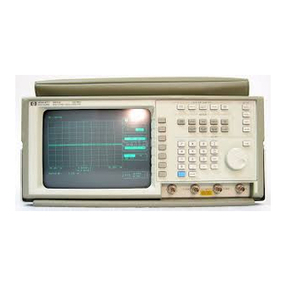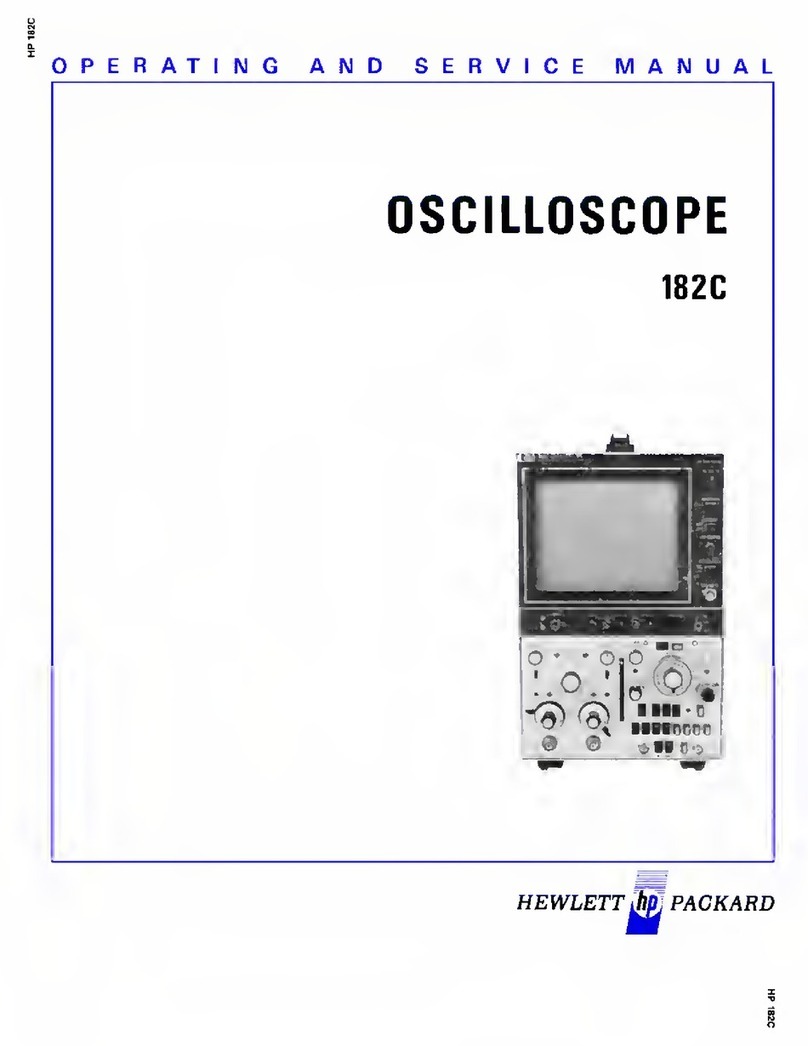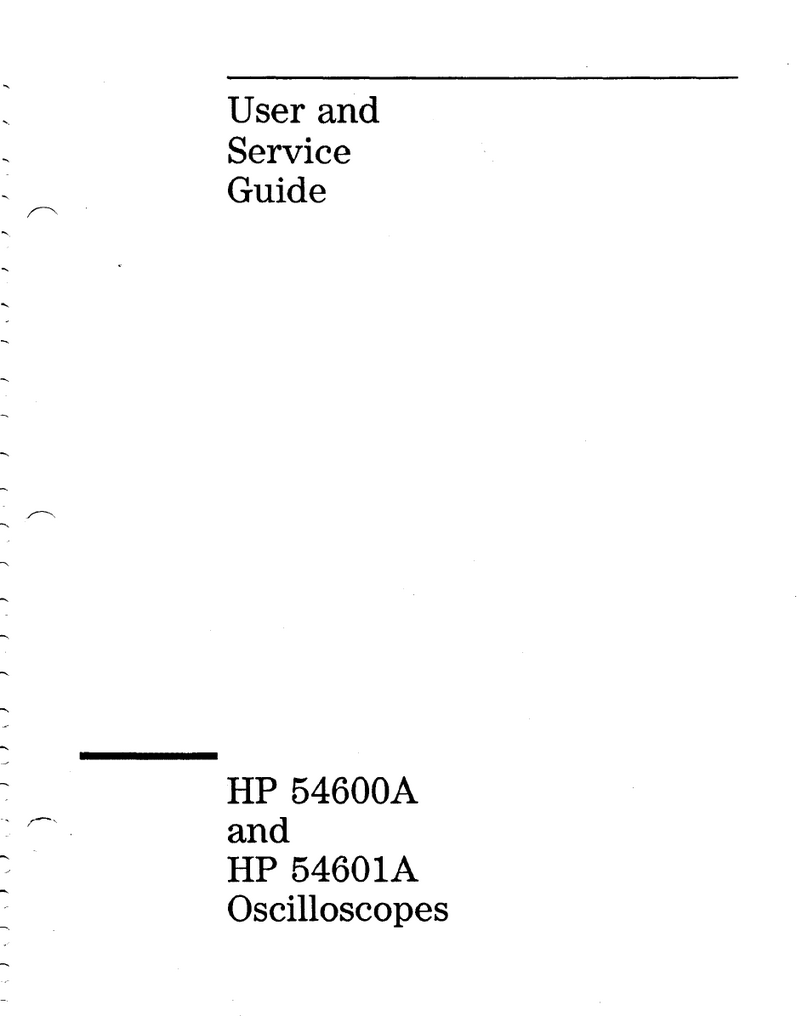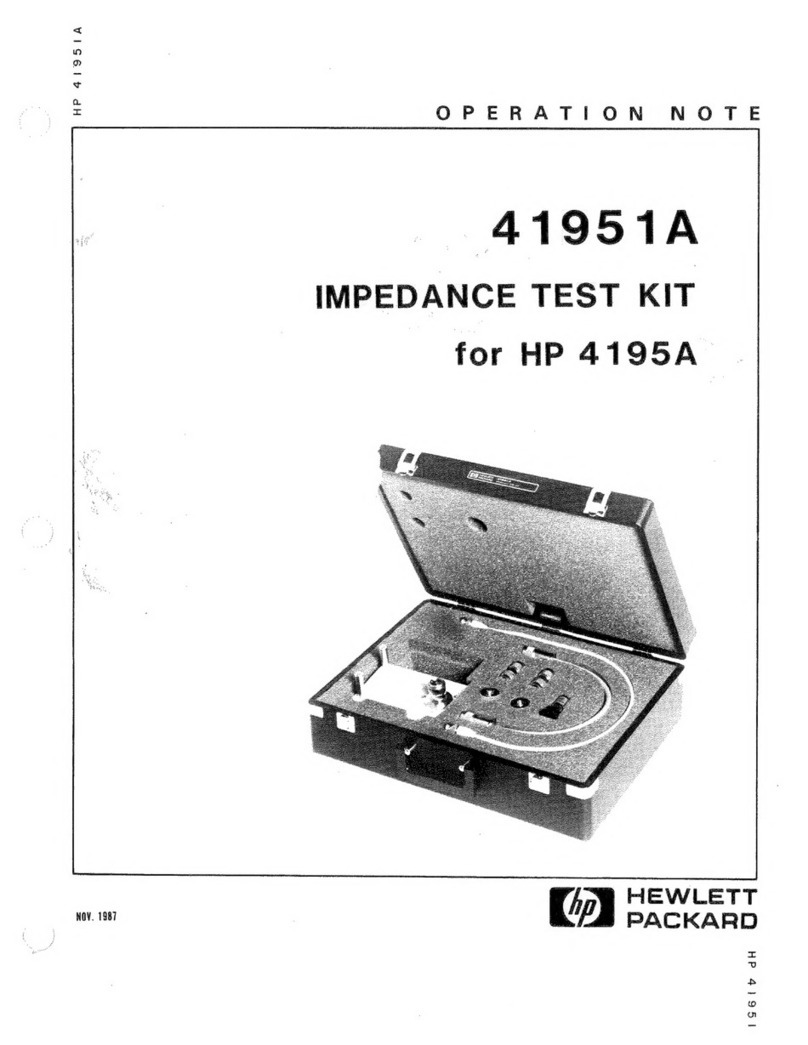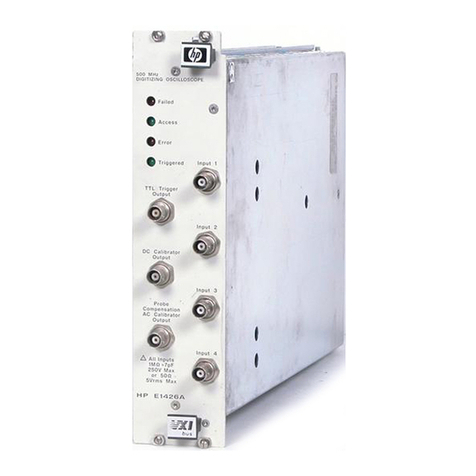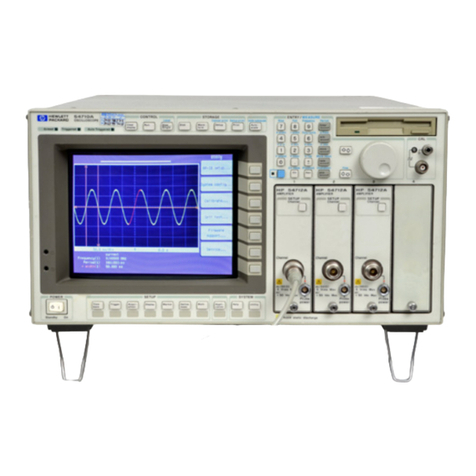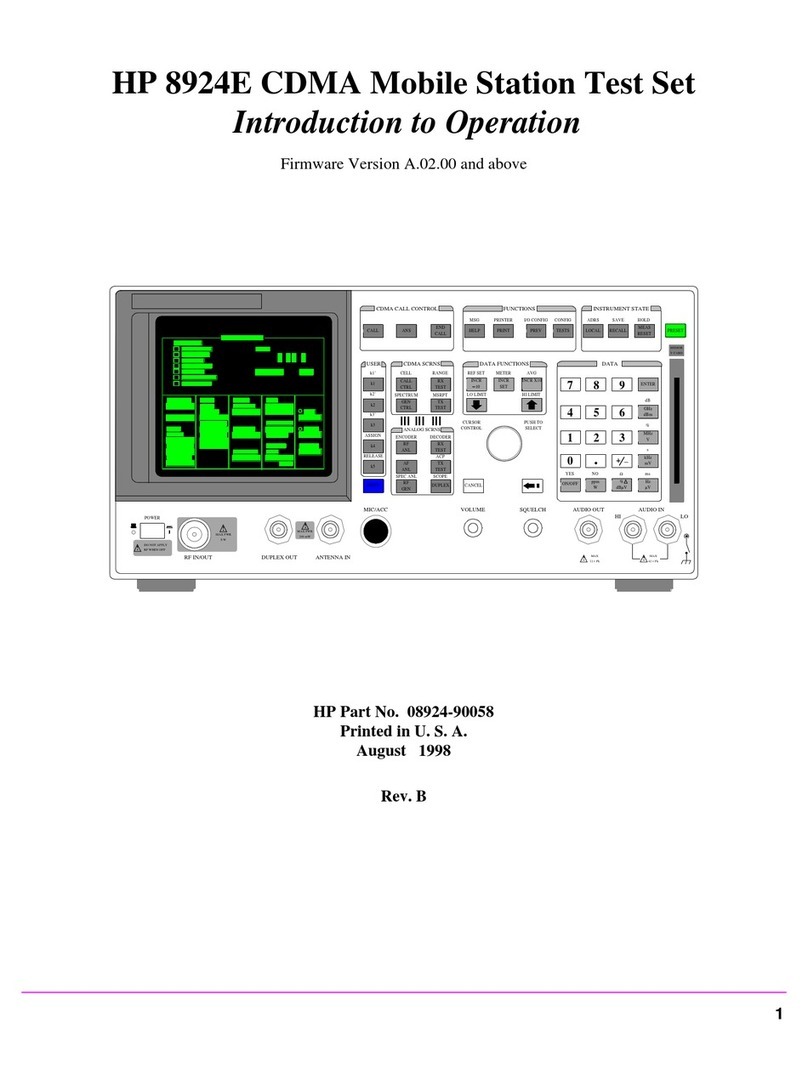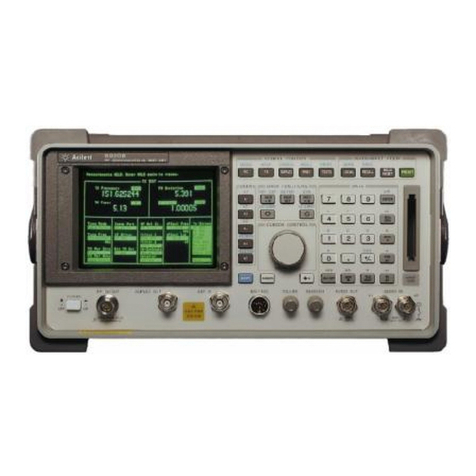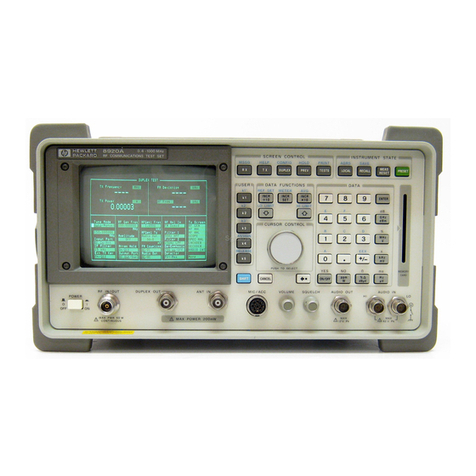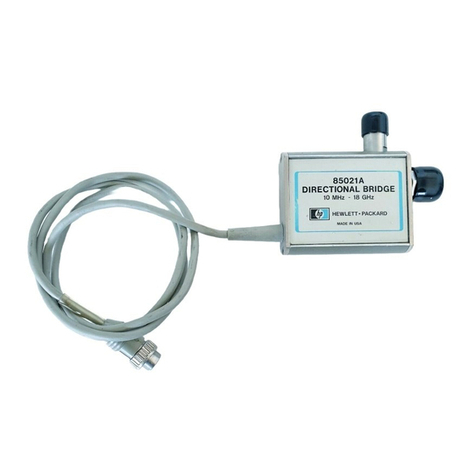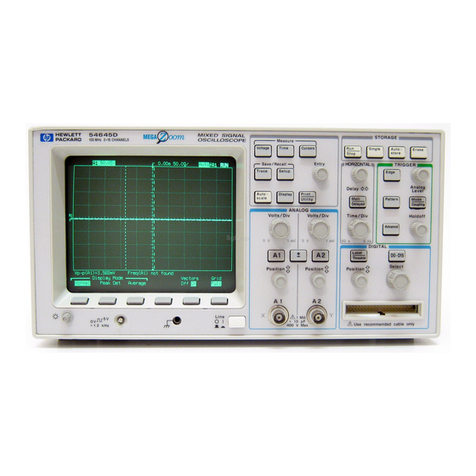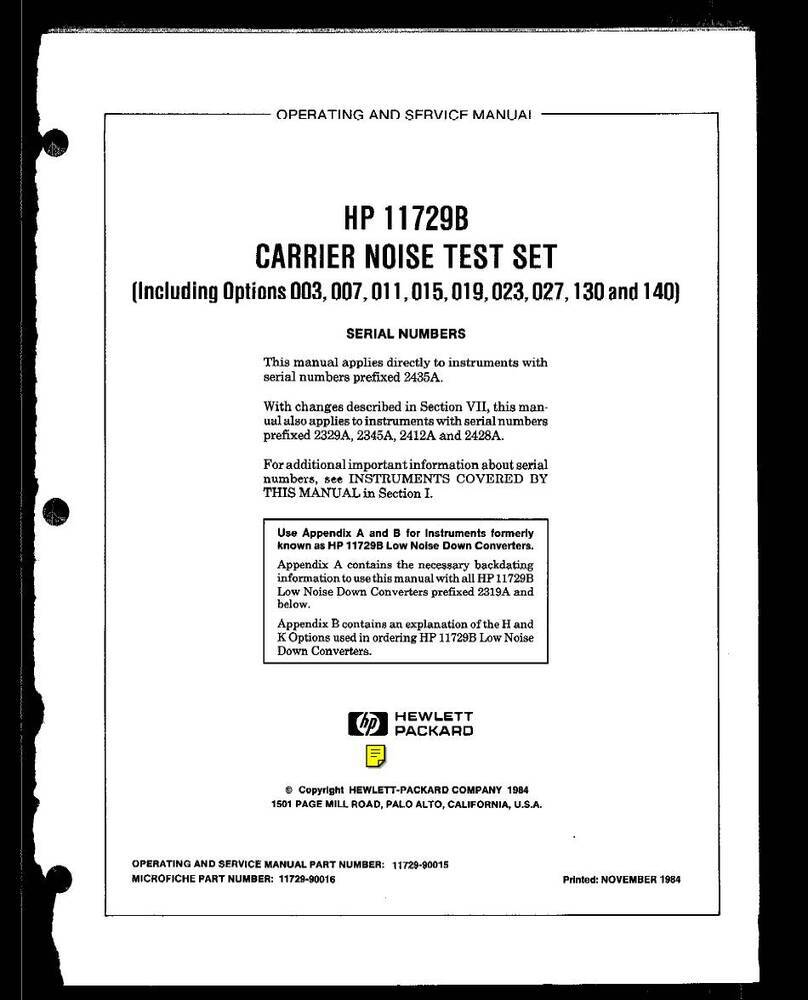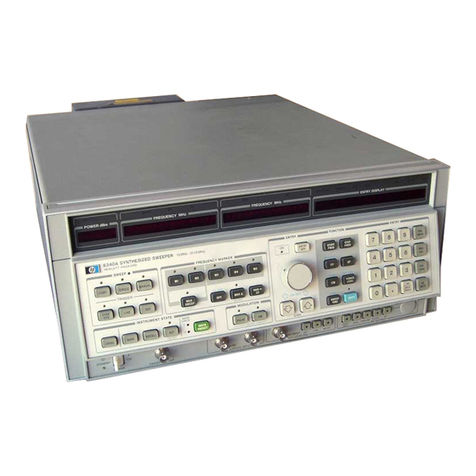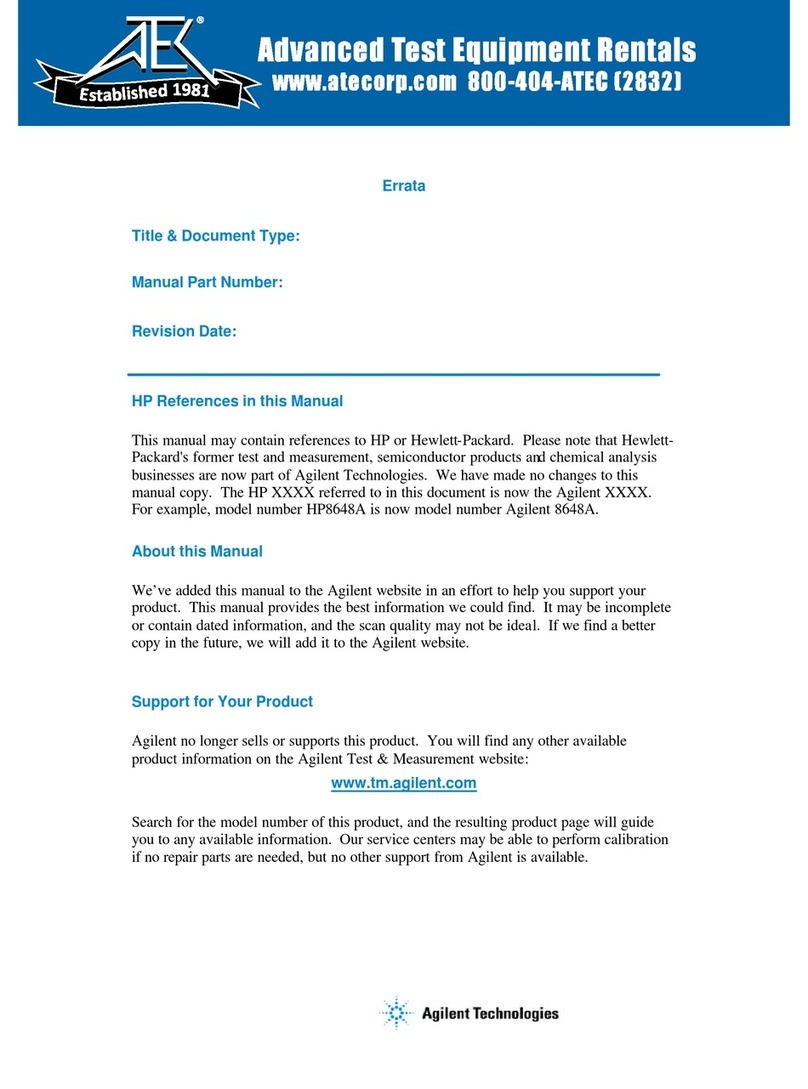HP
85052C
Precision Calibration Kit
CHAPTER ON
E
Introduction to the Calibration Kit
The HP 85052C 3.5 mm Precision Calibration Kit is
designed to be used in TRL 2-Port measurement calibra-
tion as implemented in vector network analyzers. TRL
stands for Thru-Reflect-Line, naming the main standards
used in the accuracy enhancement procedure.
TRL represents a family of calibration techniques that
measure various combinations of transmission lines and
reflection standards to determine the 2-Port 12-term error
coefficients. The specific calibration technique described
here uses measurements of the zero-length thru connec-
tion, identical reflection standards at each port, and one or
more transmission lines of appropriate impedance and
length for the frequency range. Both the TRL 2-PORT and
the Full 2-Port calibration types use the same accuracy
enhancement mathematics to correct the measured data.
TRL, as implemented with this calibration kit, brings con-
venience, accuracy, and repeatability to the error
correction process because the typical TRL calibration
requires fewer parts that are simpler to connect and
-
disconnect.
The 3.5 mm geometry connector is the most frequently
used connector when frequency coverage up to 26.5
GHz,
reasonable commonality, and durability is desired.
Well constructed connectors and transmission lines can
work up to 34
GHz.
Metrology grade versions of this con-
nector are used for high performance test ports and for
calibration standards. Whether the device uses SMA,
SMA-compatible, or 3.5 mm, the HP 3.5 mm connectors
used on the HP test ports, adapters, cables, and calibration
standards provide the most accurate and repeatable
-
solution.
All male connectors in this kit are HP precision with care-
fully controlled dimensions. All female connectors are of
the HP precision slotless (PSC-3.5) type. These connectors
are designed for long repeatability when used with appro-
priate technique. This means careful inspection of the kit
parts, familiarity with their use, and careful inspection of
the Device Under Test (DUT) connectors. Refer to the
“Specifications” chapter in the HP
85052C
Service Man-
ual, and the Technical Note included with this manual for
specific information about precision slotless connectors.
5













